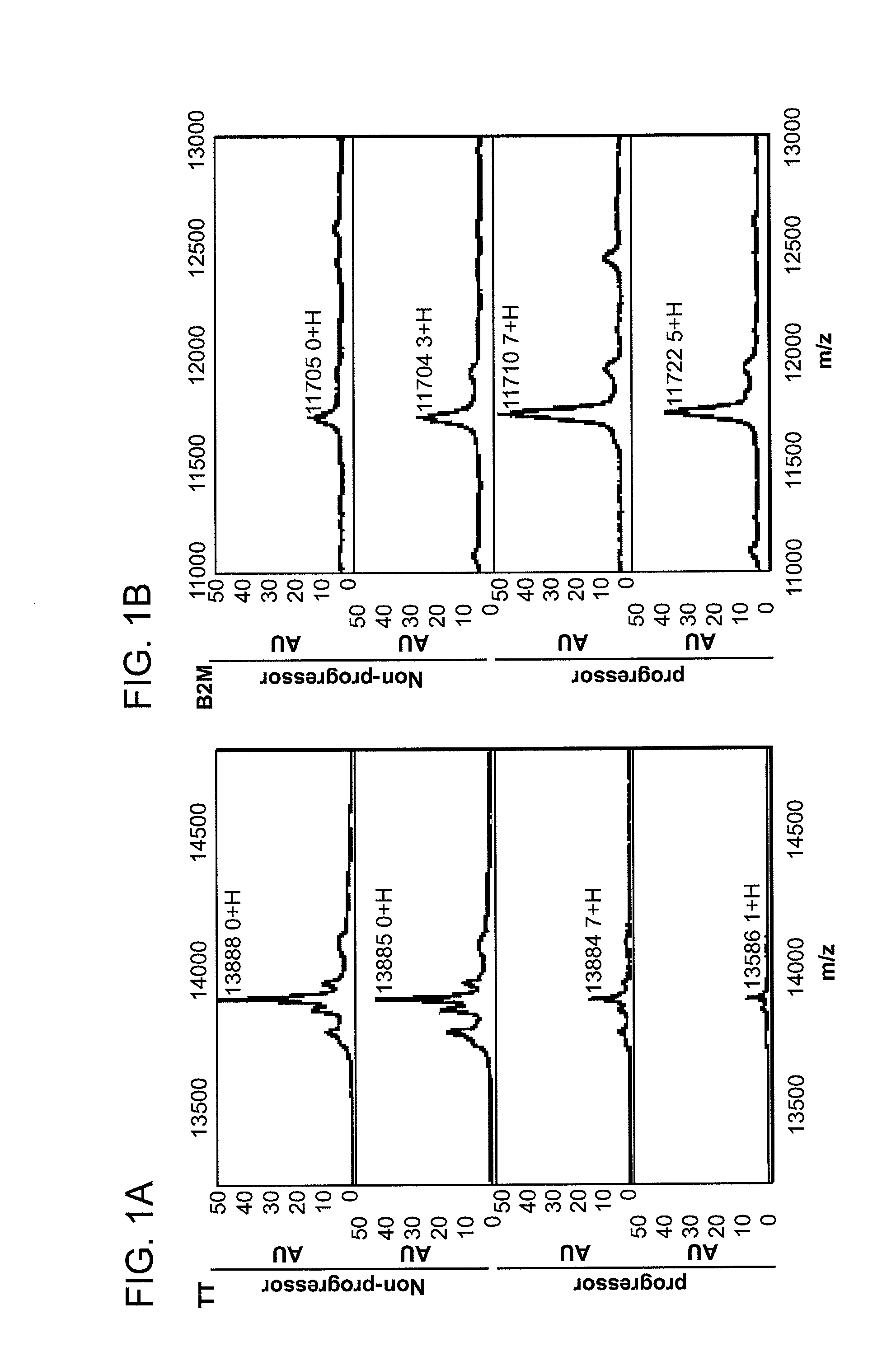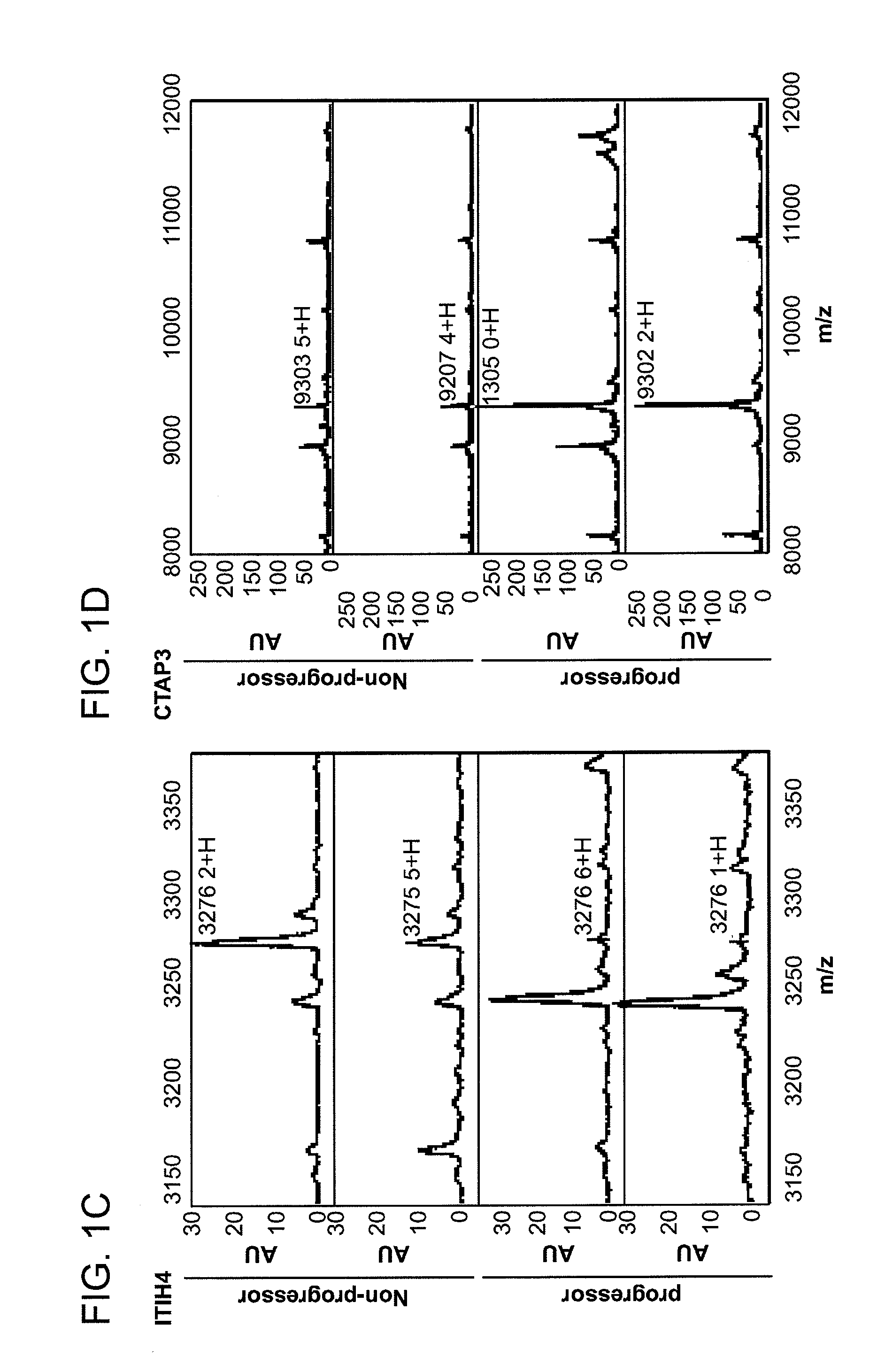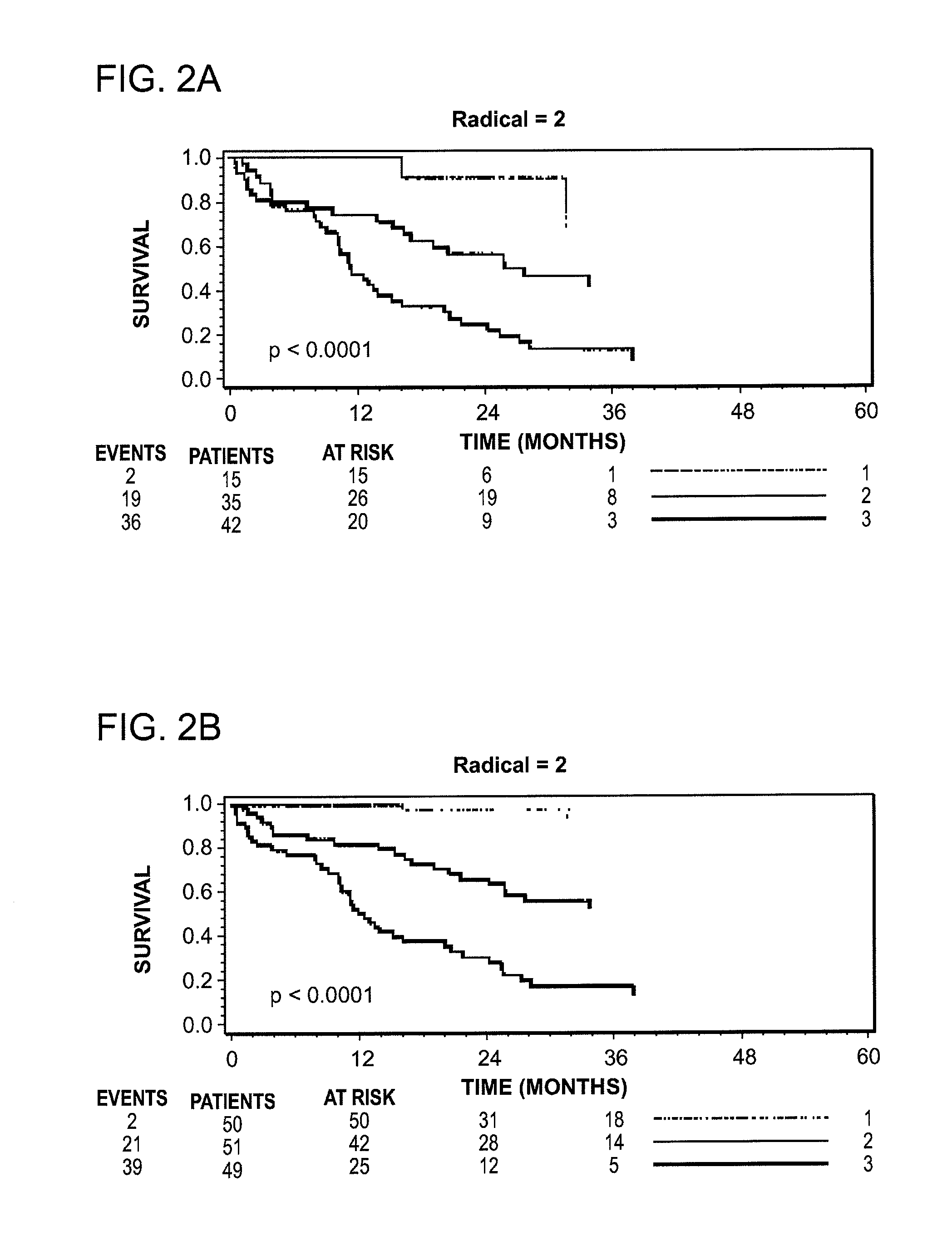Prognostic Biomarkers in Patients with Ovarian Cancer
a biomarker and ovarian cancer technology, applied in the field of prognostic biomarkers in patients with ovarian cancer, can solve the problems of poor prognosis of ovarian cancer diagnosed, insufficient survival or outcome prediction of disease stage alone, and insufficient cost and risk associated with confirmatory diagnostic procedures, so as to limit the number of markers detected
- Summary
- Abstract
- Description
- Claims
- Application Information
AI Technical Summary
Benefits of technology
Problems solved by technology
Method used
Image
Examples
example 1
Proteomic Techniques Provide Insights into Human Ovarian Cancer Subjects Prognosis
[0200]Epithelial ovarian cancer (OC) is one of the leading causes of gynaecological cancer death worldwide. From the nationwide Danish Gynecologic Cancer Database (DGCD) it is known that on average 470 new OC cases and 140 Low Malignant Potential (LMP) ovarian tumors appear each year in Denmark [1]. From the DGCD it has been shown that the 3-year overall survival stage I-IV OC patients is 53%. For stage III OC patients the overall survival is 41%, much lower than the 3-year overall survival of 89% for stage I OC patients [1]. Because DGCD was initiated in 2005, only 3-year stage related survivals are available.
[0201]The relatively asymptomatic nature of early stage disease and the lack of adequate screening tests are the main reasons why more than 70% of cases present with late-stage disease (International Federation of Gynecology and Obstetrics (FIGO) stage III or stage IV). The 5-year overall surviva...
example 2
Prognostic Panels of Biomarkers were Analyzed for Efficacy
[0242]Seven peaks were considered. All calculations have been done on the log scale (base 2). The chosen panel are: B2M_B, Trf_PR and ITIH4_D. These 3 have been validated as described. The p-values to include the others (TT_D, HEPC_D, APOA1_D and CTAP_D) are 0.66, 0.56, 0.33 and 0.35 (for OS). The following table presents univariable analyses of these peaks for Progression Free Survival (PFS) and overall survival (OS).
TABLE 3PFSOSCovariatep-valueHR95% CIp-valueHR95% CIB2M_B0.211.370.82-2.262.731.84-4.04Trf_PR0.0030.260.10-0.640.140.06-0.35ITIH4_D0.300.780.49-1.240.0540.550.30-1.01TT_D0.170.720.45-1.150.0010.560.39-0.79HEPC_D0.191.330.87-2.040.0061.581.14-2.18APO1_D0.180.680.390.0100.510.30-0.85CTAP_D0.0062.631.32-5.240.0441.761.02-3.05
[0243]All peaks are significant for OS (note that ITIH4_d just over 0.05). In order to understand the multivariable analysis, the correlations between these variables are analyzed (Spearman rank...
example 3
A Panel Including B2M_B, Trf_PR and ITH4_D Had Prognostic Value
[0248]The 3 selected biomarkers are all statistically significant (p<0.05). The weakest covariate is ITIH4D. In a model including only B2M_B and TRF_PR, the hazard ratio for TRF_PR is 0.116 which is very similar to the result seen in the selected model (HR=0.126) whereas the HR for B2M_B increases to 3.074 with inclusion of ITIH4_D (versus 2.690 in the model without ITIH4_D). This suggests that the effect of B2M_B is mediated by the inclusion of ITIH4D, i.e. becomes stronger. The internal validation procedures suggested that B2M_B and TRF_PR are very robust estimates and that ITIH4 less so but still reasonably strong. See FIG. 3.
[0249]CA125 has been included in the univariable and multivariable analyses, please see the tables. CA125 is not significant in the multivariable setting.
PUM
| Property | Measurement | Unit |
|---|---|---|
| pH | aaaaa | aaaaa |
| pH | aaaaa | aaaaa |
| pH | aaaaa | aaaaa |
Abstract
Description
Claims
Application Information
 Login to View More
Login to View More - R&D
- Intellectual Property
- Life Sciences
- Materials
- Tech Scout
- Unparalleled Data Quality
- Higher Quality Content
- 60% Fewer Hallucinations
Browse by: Latest US Patents, China's latest patents, Technical Efficacy Thesaurus, Application Domain, Technology Topic, Popular Technical Reports.
© 2025 PatSnap. All rights reserved.Legal|Privacy policy|Modern Slavery Act Transparency Statement|Sitemap|About US| Contact US: help@patsnap.com



